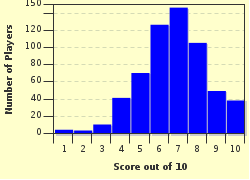Quiz Answer Key and Fun Facts
1. First things first! Giant pandas are mammals.
2. What is the name of the plant that makes up 99% of the daily diet of a giant panda?
3. Giant pandas are scientifically classified as herbivorous animals.
4. Giant pandas (sadly, for many children) only live in the wild on this continent beginning with A.
5. Giant pandas are an endangered species. What is the reason for this?
6. There are many names for giant pandas in the Chinese language, but they all have a common word. What is the Chinese word for 'bear' ?
7. Giant pandas in zoo cages often exhibit a peculiar behavior which puzzles many zoo visitors. What do they do?
8. Adult pandas may be cuddly, but baby pandas are even cuddlier! What do baby pandas look like, immediately after birth?
9. Giant pandas are very family-oriented creatures. Indeed, even though mothers feed and nourish their babies for the first few months of their lives, fathers then take charge of their education in the ways of feeding and survival.
10. I think it is appropriate to end this giant panda quiz with a question concerning its most distinctive feature, its black and white coat. Which of the following body parts of a giant panda is NOT black?
Source: Author
dalthor1974
This quiz was reviewed by FunTrivia editor
NatalieW before going online.
Any errors found in FunTrivia content are routinely corrected through our feedback system.

